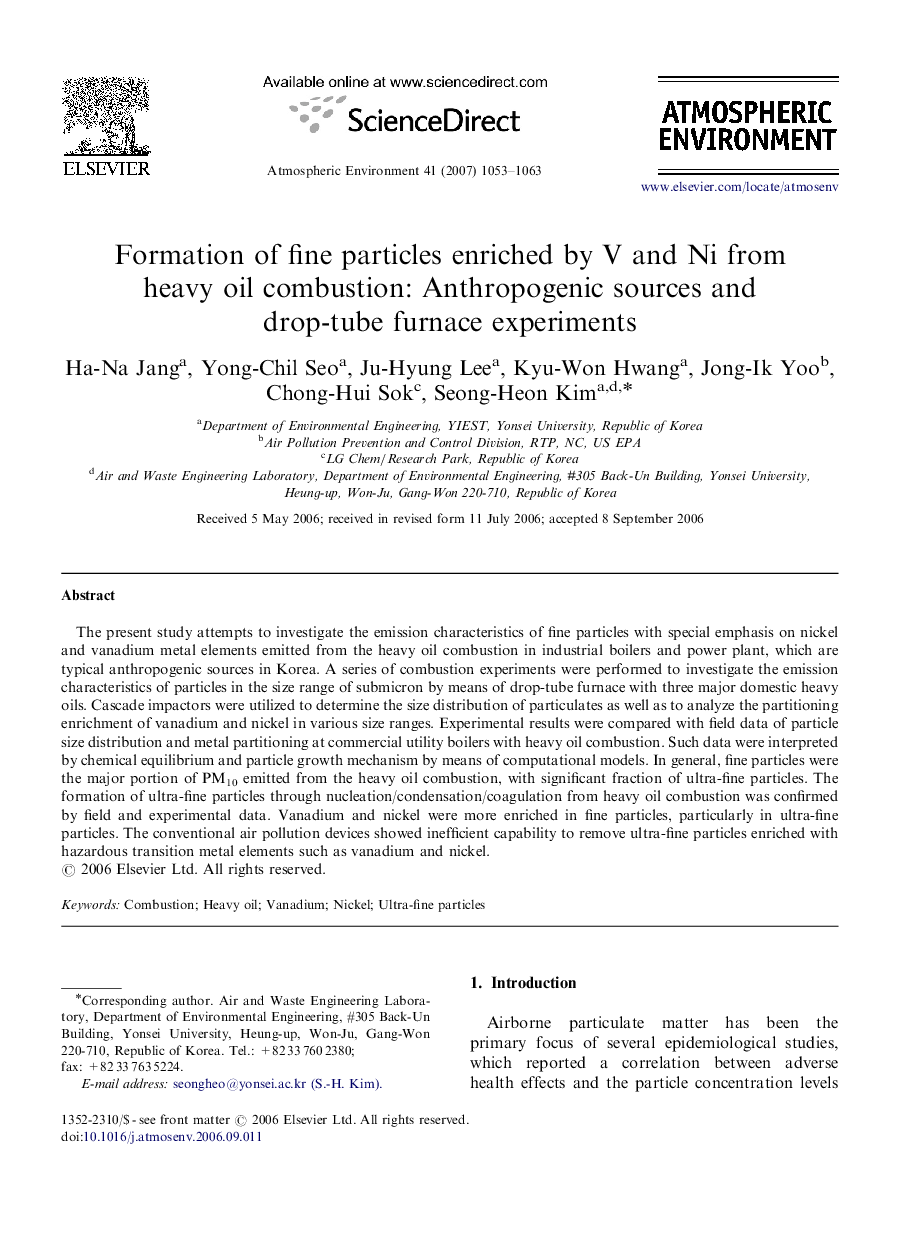| Article ID | Journal | Published Year | Pages | File Type |
|---|---|---|---|---|
| 4443079 | Atmospheric Environment | 2007 | 11 Pages |
The present study attempts to investigate the emission characteristics of fine particles with special emphasis on nickel and vanadium metal elements emitted from the heavy oil combustion in industrial boilers and power plant, which are typical anthropogenic sources in Korea. A series of combustion experiments were performed to investigate the emission characteristics of particles in the size range of submicron by means of drop-tube furnace with three major domestic heavy oils. Cascade impactors were utilized to determine the size distribution of particulates as well as to analyze the partitioning enrichment of vanadium and nickel in various size ranges. Experimental results were compared with field data of particle size distribution and metal partitioning at commercial utility boilers with heavy oil combustion. Such data were interpreted by chemical equilibrium and particle growth mechanism by means of computational models. In general, fine particles were the major portion of PM10 emitted from the heavy oil combustion, with significant fraction of ultra-fine particles. The formation of ultra-fine particles through nucleation/condensation/coagulation from heavy oil combustion was confirmed by field and experimental data. Vanadium and nickel were more enriched in fine particles, particularly in ultra-fine particles. The conventional air pollution devices showed inefficient capability to remove ultra-fine particles enriched with hazardous transition metal elements such as vanadium and nickel.
